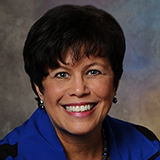Background: This program was designed and implemented to ensure that medically underserved women who fall between the cracks in the healthcare system receive the care they deserve. The organization looked at barriers these women were encountering and set a goal to provide adequate information and access to effective cancer screening, diagnosis, and treatment services, in an equitable and timely manner. In September 2006 a team was formed to look at barriers to effective care. The team consisted of the patient navigator, the manager of the Women's Health Center, the director of the Cancer Center, the lead radiologist, and a clinical nurse specialist. The patient navigator, instrumental in achieving patient-centered care, led the team and acted as an advocate for the patients. The patient navigator does not direct care but acts as a liaison between patients and the medical team. The patient navigator assists in scheduling timely appointments with surgeons, medical oncologists, and radiation oncologists. Their primary care physician is kept involved with the patients' status and treatment recommendations. Being a certified medical oncology nurse and breast care nurse, the patient navigator can clarify information given to the patient on disease management and outcomes. In addition, potential barriers are identified, such as insurance issues or lack of insurance, financial concerns, transportation issues, disease management, support services, and communication/cultural needs. The areas of concern identified to be of top priority included: improving the return rate for annual screening mammograms, improving access timeline from problematic diagnostic mammogram to biopsy, and improving the timeframe in which pathology results communicated to the patient and a navigator assigned.
Objectives: (1) Intent of navigation - "No Woman Left Behind" is an education, outreach, and navigation program designed to give medically underserved women the skills they need to get the healthcare they deserve. Our mission is to remove barriers and challenge ourselves to exceed expectations. (A summary poster of the initiatives listed below, plan, data, and outcomes will be provided.) (2) Measurable outcomes to remove barriers and to exceed expectations included: (A) improving the return rate for annual mammography screening; (B) improving access timeline from problematic diagnostic mammogram to biopsy procedure and pathology to be no more than 9 business days; (C) decreasing wait time from biopsy to pathology results and communication to patient and navigator to be no more than 2 business days.
Outcomes: (A) Improving the return rate for annual mammography screening. Patient return rate increased from 60% in 2006 to 80% in 2007 to 92% in 2009, and then decreased to 88% in 2010. The 2010 decrease resulted from a local OB/GYN office investing in a digital mammography unity, with patients not returning to our center as in previous years. Barriers identified included patients who chose to seek services at different institutions and some doctors' offices were at capacity and unable to give patients a script and perform clinical breast examination in a timely manner. The interventions instituted included postcard reminders sent to all patients the month before their due date, a secretary call directly after postcards are sent out, and a staff member call to doctors' offices directly for scripts. (B) Improving access timeline from problematic diagnostic mammogram to biopsy procedure and pathology. This access timeframe varied from an average wait time of 12 business days in 2007 to 13 business days in 2008 to 9.3 business days in 2009, to 11 business days in 2010. The 2010 increase was noted to be in direct correlation to patient preference and request of a second opinion. Barriers to care included patients who chose to wait a long period of time for a biopsy as they gather second opinions and whether the doctor’s office was willing to see a patient immediately to do a history and physical. The interventions instituted included giving a standardized communication form to the doctor and the patient, staff calls to the doctor's office daily to determine patient status, and use of physician assistants to do surgical clearance. (C) Decreasing wait time from biopsy to pathology results and communication to patient and assignment of navigator. The timeframe in which pathology results were communicated to a patient was 11.6 business days in 2007, 8 business days in 2008, 3 business days in 2009, and 1.86 business days in 2010. The main barrier was a lack of timeliness in communication of results to the patient by the doctor's office, delaying subsequent referral to the navigator. The interventions instituted included having the radiologist communicate pathology results to patients and immediately instituting a consult with a navigator.
Conclusions: The "No Woman Left Behind" patient navigation program has had the impact of sustaining changes, increasing access, community visibility, and patient trust. The documented improvement in return rate for screening mammograms from 60% to 88% to 92%, the improvement noted in patient access timeline from problematic mammogram to biopsy from 12 days to 11 days, and the improvement in which pathology results were communicated to patient and a navigator was assigned went from 11.6 days to 1.86 days. This has led to retention of patients, referral of new patients, and downstream financial revenue for the facility. The increase in the referral base by 15% allowed us to purchase a second digital mammography unit.





